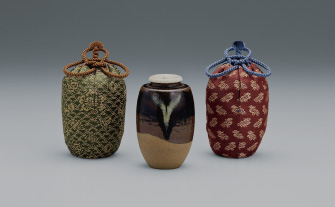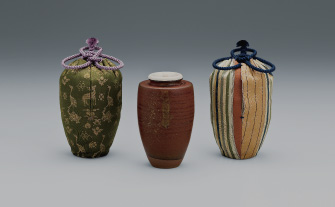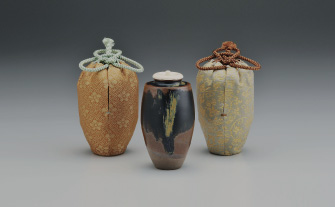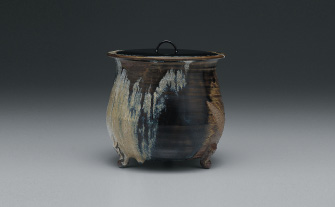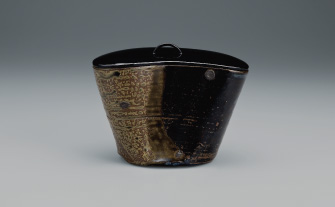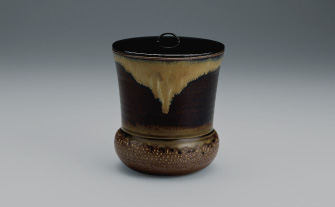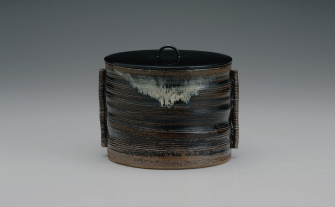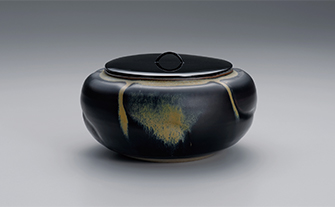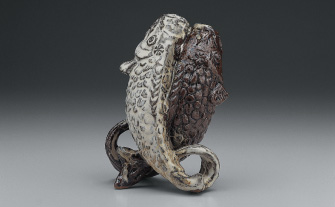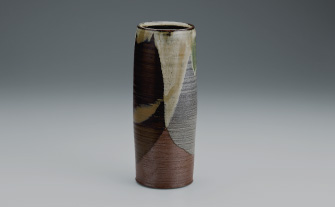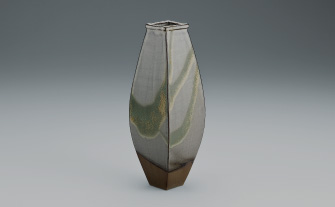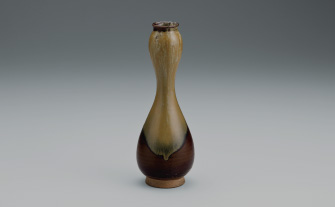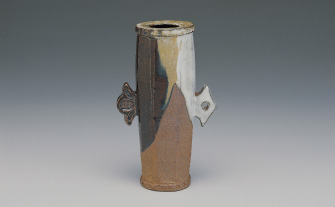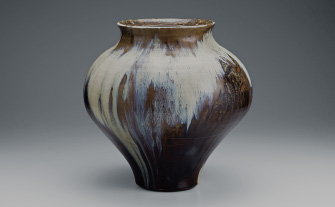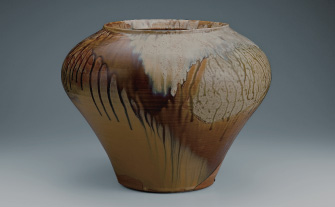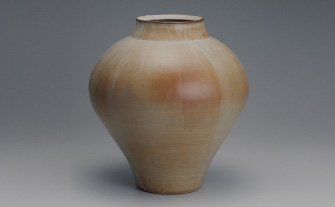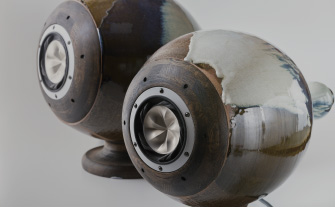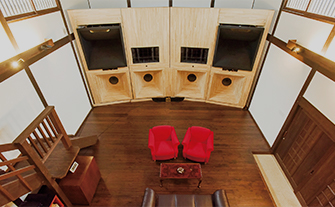Means a container for matcha tea. In a narrow sense, the name refers to a ceramic container, as opposed to the wooden containers called natsume and used for light matcha tea. The cover is often made of ivory, and covered with gold leaf on the inside. Chaire are also called koicha-ki (dark tea utensils), as they are generally used for « dark » matcha. Finding the ultimate beauty in each subtle character of the seemingly simple tea containers is a specificity of the Japanese tea ceremony culture.
Chaire
Mizusashi
A container to keep the fresh water which will be added to the chagama (cast iron kettle) or serve to rince the chasen (fouet à thé en bamboo) or the tea bowl.
Chawan
In the Japanese tea ceremony, the choice of the cup depends on the season and the theme of the ceremonie. Most chawans are wan-gata (bowl form), but there are also tsutsu-gata (cylindrical from), hira-gata (flat form), wa-gata or tama-gata (round shape), hanzutsu (semi-cylindrical shape), hazori (upswept rim), kutsugata (shoe-shaped) etc.
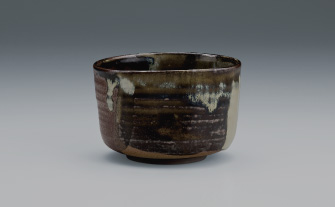
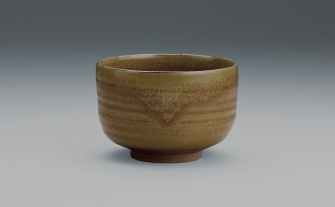
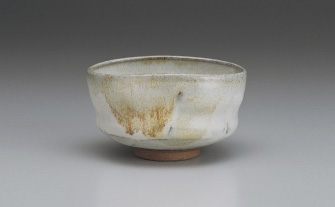
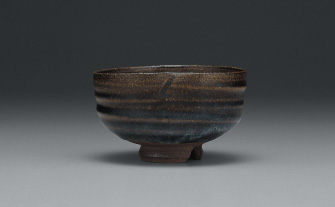
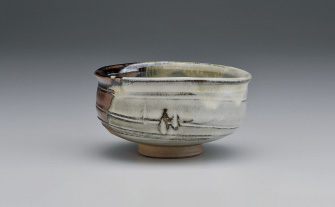
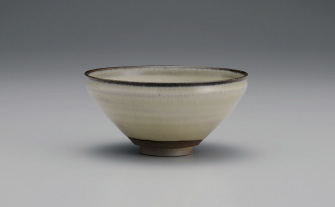
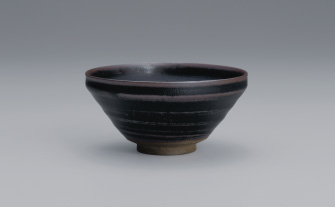
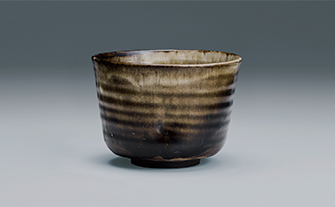
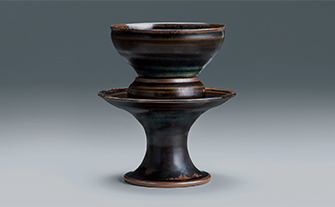
Hanaire
Hanaire is a vase to put the flower arrangement for tea ceremony, they are made by metal, porcelain, ceramic or bamboo.
Tsubo
This relatively large vessel can be displayed in the tokonoma (alcove in the traditional Japanese tea ceremony room), or receive a flower composition. It generally has a round bag-like form. Tsubo have appeared in the early years of the Jômon period in Japan, it was one of the main vessels as kame (deep bowl jar).
Earthenware
Takatori ware has dynamic forms, and the complex colors and patterns of their natural materials produce beautiful keshiki or “landscape”. At first glance, this “landscape” may seem flashy, but they accentuate dishes to a surprising degree with the aesthetics of the Enshu region. I am taking on the challenge of applying these aesthetics to modern Western culinary culture.
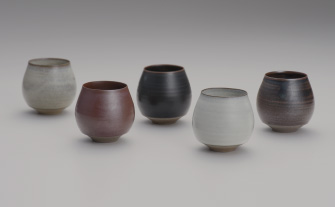
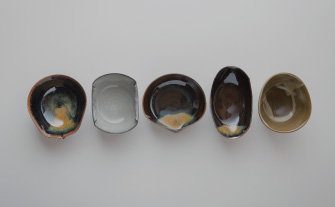
( Hisago, Maki, Hamaguri, Hissen, Kutsu )
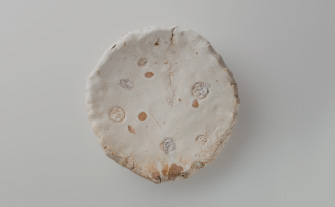
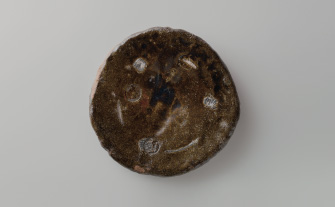
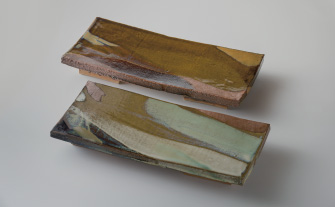
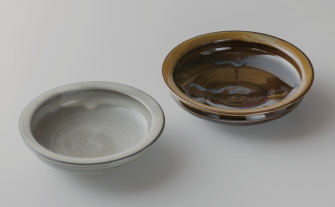
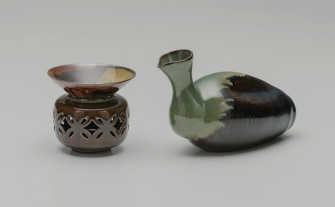
W18.0×L8.0×H10.0㎝
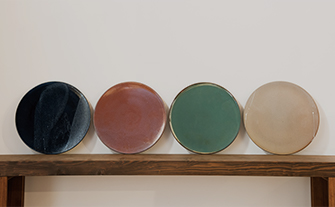
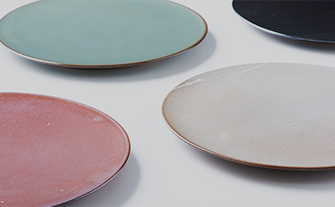
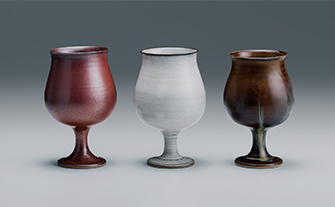
Sound
The clay used in Takatori ware in Koishiwara district is highly unique. It is a fine, silky clay, rich in iron, which is used in pottery ware but possesses untapped potential. Used in speakers, it produces exceptionally beautiful sounds, especially in the treble range.
